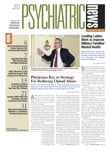The often-quoted and most widely accepted statistic regarding the prevalence of autism spectrum disorder (ASD) in children is 1 in 110. It is based on a 2006 retrospective review of evaluation records in multiple sites participating in the Autism and Developmental Disabilities Monitoring (ADDM) Network.
The CDC collected data from existing records in 11 ADDM Network sites in 2006 and published results in the Morbidity and Mortality Weekly Report in 2009. The CDC report indicated ASD prevalence ranging from 4.2 to 12.1, with most states identifying a prevalence of 7.5 to 10.4 cases (the average was 9 cases) per 1,000 8-year-old children, slightly less than 1 percent.
But could there be children—undiagnosed, untreated—who are unaccounted for in those numbers? It's a question Richard Grinker, Ph.D., a professor of anthropology, international affairs, and human sciences at the Elliott School of International Affairs at George Washington University, has been asking himself for years. Grinker's 19-year-old daughter has been diagnosed with ASD and was mainstreamed in school with the help of special-education classes. "It has always struck me that there were kids in mainstream schools who had undiagnosed autism. And I suspected the numbers were higher than thought, because determination of those numbers was made by evaluating medical records, not children themselves," said Grinker in an interview with Psychiatric News.
Recently, Grinker collaborated with a like-minded and multicultural group of researchers that included Young Shin Kim, M.D., Ph.D., and Bennett Leventhal, M.D., both associated with the Nathan S. Kline Institute for Psychiatric Research, and Yun-Joo Koh, Ph.D., of the Korea Institute for Children's Social Development and Rudolph Child Research Center. Along with seven other co-researchers, the group asked "what if you went into a community and looked not only at the records, but also at every child?
And they did just that, in a study conducted from 2005 to 2009 in the Ilsan district of Goyang City, South Korea, a stable residential community near Seoul, representative of the general Korean population.
They estimated ASD prevalence and described ASD clinical characteristics in a population-based sample of 55,266 children aged 7 to 12. The population of children included a low-probability sample from regular education schools and a high-probability group from special-education schools and a disability registry.
The results were unprecedented: an ASD prevalence of 2.64 percent, with only 0.75 percent in the high-probability group (in the lower range of prior ASD prevalence estimates) but 1.89 percent in the general population sample. The study method may have identified an entire population of children with ASD that has not yet been characterized.
"The majority of the previously undiagnosed children uncovered by this study were in mainstream schools, with average or above average intelligence. They had impairments, but not enough to qualify for supportive services. Many of them were identified by their parents, but not by their teachers, because their teachers did not find them to be a burden. It's a compelling example of how a condition can be common in a population, even if it is not commonly diagnosed," said Grinker.
"More than it suggests a number, this study suggests that the method used to determine numbers, when it comes to autism, will profoundly influence the outcome," he added.
Kim and Leventhal told Psychiatric News that the participation of Koh, a developmental psychologist, was a critical element of the study. "Many people try to do international studies," said Kim, "but one of the difficulties is that you must have local people you can trust and work with."
In the report, the researchers described their methods for avoiding cultural bias and indicators they used to evaluate whether any cultural bias had occurred.
Kim intends to continue working with the Ilsan population to look at environmental and genetic factors and to determine a rate of incidence of ASD.
The research was funded by an Autism Speaks Pilot Research Grant, a Children's Brain Research Foundation Research Grant, NIMH Career Awards, and the George Washington University Institute for Ethnographic Research. Additional funding was provided by the Jean Young and Walden W. Shaw Foundation, Daniel X. and Mary Freedman Foundation, and Dukyoung Foundation.

